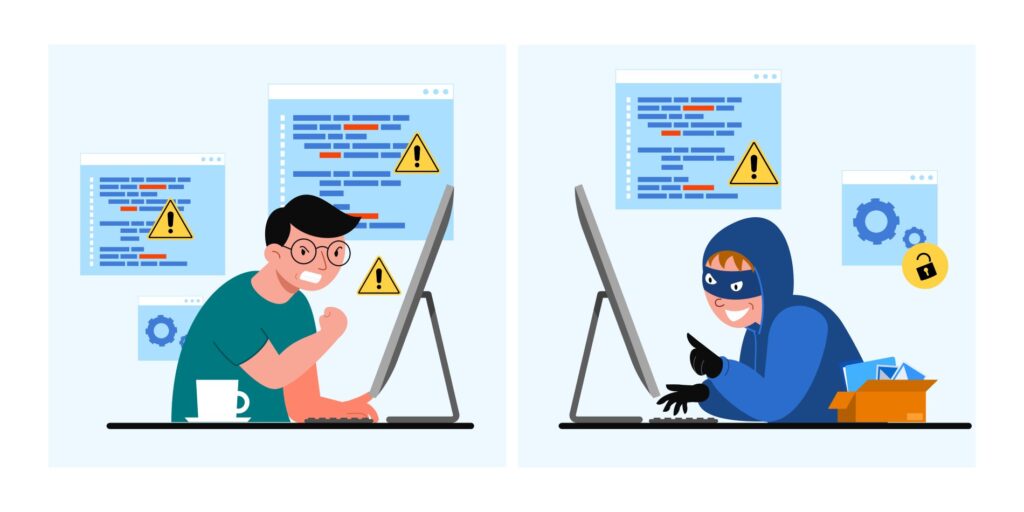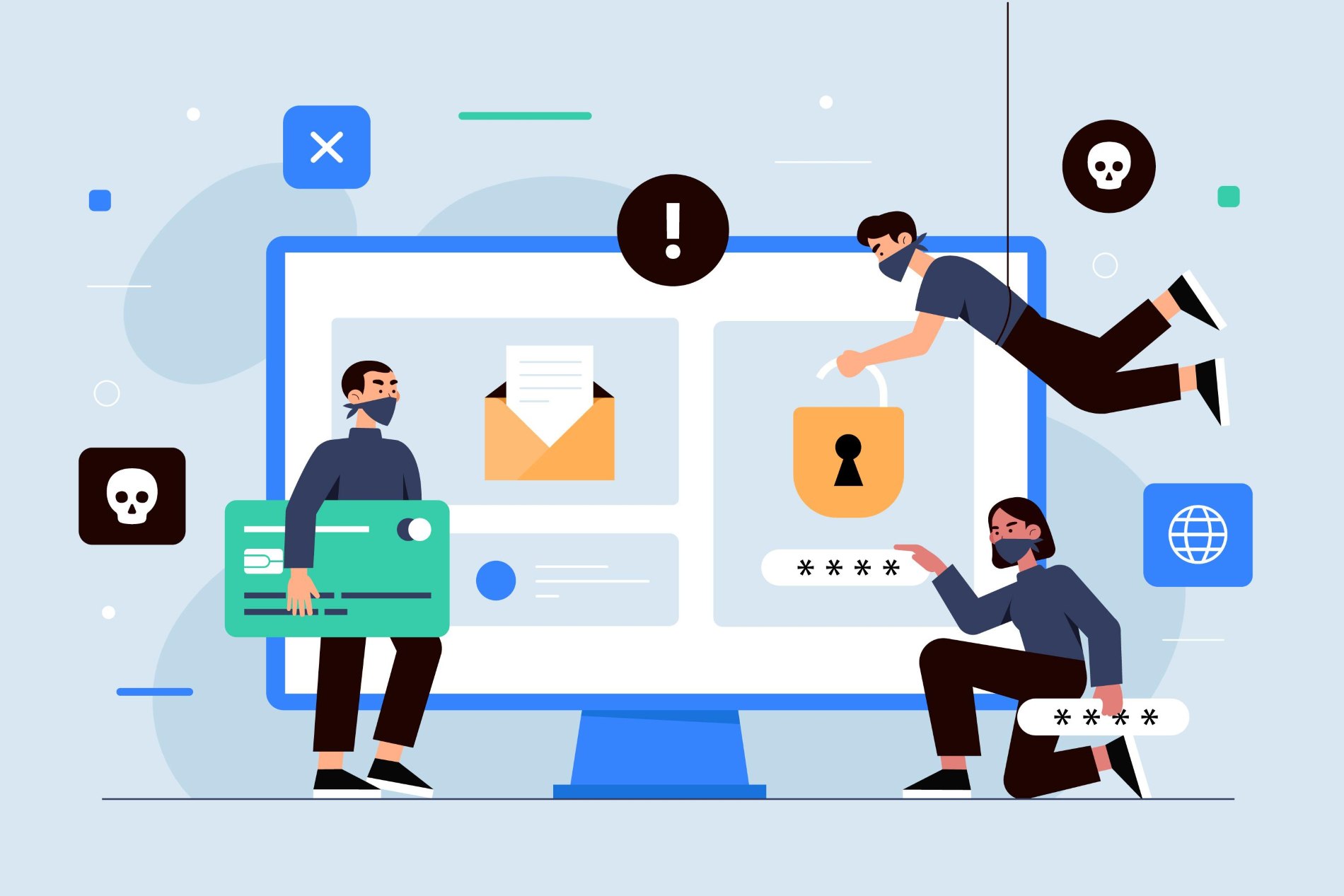Understanding Quishing and Protecting Your Data from QR Code Scams
- Quishing is a type of phishing attack that uses QR codes to trick users into visiting malicious websites or downloading malware.
- It seems likely that hackers exploit the trust and convenience of QR codes, often found in public places like restaurants or parking lots, to steal sensitive information such as passwords or credit card details.
- Research suggests that quishing is harder to detect than traditional phishing because QR codes appear harmless and bypass many email security filters.
- To protect yourself, it’s advisable to verify the source of QR codes, preview URLs before scanning, use trusted scanner apps, and enable multi-factor authentication (MFA).
- There’s no significant controversy around quishing, but some debate exists about whether it’s a distinct attack type or just a variation of phishing.
On This Page
Table of Contents
Introduction
In today’s fast-paced digital world, QR codes have become a staple of convenience, appearing everywhere from restaurant menus and parking meters to advertisements and emails. These two-dimensional barcodes allow users to quickly access websites, make payments, or retrieve information without typing long URLs. However, this convenience comes with a hidden danger: hackers have found a way to exploit QR codes in a cyber attack known as quishing. Quishing, a combination of “QR” and “phishing,” is a sophisticated method where cybercriminals use malicious QR codes to steal sensitive information or install malware on your devices.
This article explores what quishing is, how it works, real-world examples, and practical steps to protect yourself from this growing threat, all explained in simple terms with analogies and examples to make it easy to understand.
What is Quishing?
Quishing is a type of phishing attack that leverages QR codes to deceive users. Phishing is a well-known cybercrime where attackers trick individuals into providing sensitive information—such as passwords, credit card numbers, or personal details—by pretending to be a trustworthy source. Traditionally, phishing involves emails or text messages with malicious links. Quishing takes this deception further by using QR codes, which are often perceived as harmless and convenient.
Unlike traditional phishing, where users might hesitate to click suspicious links, QR codes are frequently scanned without a second thought. This makes quishing particularly effective, as it exploits the trust we place in these codes. For example, you might scan a QR code at a restaurant to view the menu, not realizing it could lead to a fake website designed to steal your data.
Why is Quishing Dangerous?
- Widespread Use: QR codes are everywhere, and we’ve grown accustomed to trusting them.
- Lack of Transparency: Unlike text links, you can’t see where a QR code will take you without scanning it.
- Bypassing Security: Many email security systems focus on detecting suspicious links or attachments, but QR codes, being images, often go unnoticed.
- Potential Harm: Scanning a malicious QR code can lead to:
- Fake login pages that steal your credentials.
- Websites that automatically download malware.
- Payment sites that siphon your credit card information.
In short, quishing turns a simple scan into a potential security nightmare, making it a growing concern in cybersecurity.
How Quishing Works
Quishing attacks exploit the trust users place in QR codes, which are often seen as a safe and convenient way to access information. Here’s a detailed look at how these attacks are carried out:
- Creating the Malicious QR Code
Hackers use readily available online tools to generate QR codes that encode malicious URLs. These URLs can point to fake websites or trigger automatic downloads of malware. The QR codes are designed to look identical to legitimate ones, making them hard to distinguish. - Disguising the QR Code
To make the attack more effective, hackers might disguise the QR code to look like it belongs to a legitimate source. For example, they might print the QR code on a sticker that resembles those used by a particular business or organization. - Distributing the QR Code
The malicious QR code can be distributed in various ways:- Physical Placement: Stickers with fake QR codes can be placed over legitimate ones in public places, such as restaurant tables, parking lots, or ATMs.
- Digital Distribution: QR codes can be sent via email, text messages, or social media, often with compelling reasons to scan them, like “Update your account” or “Claim your reward.”
- Social Engineering: Attackers might use psychological tactics to convince users to scan the QR code, such as pretending to be from a trusted organization or creating a sense of urgency.
- User Scans the QR Code
When a user scans the QR code with their smartphone, their device is directed to the URL encoded in the code. This URL could lead to:- A fake login page that looks like your bank or email provider.
- A site that automatically downloads malware without your knowledge.
- A page prompting you to enter sensitive information, like credit card details.
- Data Theft or Malware Infection
If you enter your login credentials on a fake page, they are captured by the attacker. If malware is downloaded, it can:- Steal sensitive data from your device.
- Monitor your activity.
- Take control of your device for further attacks.
- Covering Tracks
After the attack, the malicious website might be taken down, or the QR code might be altered to point to a different location, making it difficult to trace the hacker.
The success of quishing lies in its ability to bypass traditional security measures. Many email security systems focus on detecting suspicious links or attachments, but QR codes, being images, often go unnoticed. This makes quishing a particularly insidious threat.
Hypothetical Scenario
Imagine you’re dining at a café that uses QR codes for its menu. You notice the QR code on your table looks slightly different—perhaps it’s a different color or has a small sticker overlay. Unsuspecting, you scan it anyway. Instead of opening the menu, it takes you to a website that looks identical to your bank’s login page. The URL seems correct at first glance, but upon closer inspection, it’s a slight variation, like “mybank.com” instead of “mybank.com.” If you enter your credentials, they’re sent straight to the hacker. This scenario highlights the importance of verifying the source of QR codes and being cautious when entering sensitive information.
Real-World Examples of Quishing
While specific high-profile cases of quishing may not always make headlines, the concept is similar to other phishing attacks. Here are some common ways quishing is used:
- Fake Payment Sites: Hackers might use quishing to direct users to fake payment sites where they enter their credit card information, which is then stolen. For example, a QR code on a parking meter might lead to a fraudulent payment page.
- Malware Distribution: A QR code might trigger the download of an app that appears legitimate but is actually designed to steal data or spy on your device. For instance, a flyer in an office might claim to offer a free productivity app but instead installs malware.
- Credential Harvesting: By directing users to fake login pages, attackers can collect usernames and passwords for services like email, social media, or banking. An email from what appears to be HR might include a QR code for a new benefits portal, but scanning it leads to a fake login page.
A Real-World Analogy
Think of scanning a QR code like accepting a drink from a stranger at a party. You might ask yourself:
- Do I know this person?
- Is the drink sealed, or could it have been tampered with?
Similarly, when scanning a QR code, you should ask:
- Do I trust the source of this code?
- Could it have been altered to lead me somewhere dangerous?
Just as you wouldn’t drink from an untrustworthy source, you shouldn’t scan a QR code without verifying its legitimacy.
How to Protect Yourself from Quishing
Protecting yourself from quishing requires a combination of awareness and proactive measures. Here are practical steps you can take to stay safe:
- Be Cautious with Unknown QR Codes
Avoid scanning QR codes from unknown or untrusted sources. If you receive a QR code via email or text from someone you don’t know, delete it without scanning. Even if it’s from a known contact, verify its legitimacy, as their account could be compromised. - Preview the URL
Many QR code scanner apps and smartphone cameras allow you to preview the URL before opening it. Take a moment to check if it looks legitimate. Look for:- Typos in the domain name (e.g., “g00gle.com” instead of “google.com”).
- Unusual domain names or subdomains.
- Suspicious characters or extensions.
- Use Trusted Scanner Apps
Download a reputable QR code scanner app that includes security features, such as URL preview and malware detection. These apps can warn you before you visit a malicious site. - Keep Software Updated
Ensure your operating system and apps are up to date. Updates often include security patches that protect against known vulnerabilities that malware might exploit. - Enable Multi-Factor Authentication (MFA)
MFA adds an extra layer of security to your accounts. Even if a hacker obtains your password, they would still need a second form of verification, such as a code sent to your phone, to access your account. - Avoid Entering Sensitive Information
Be wary of entering sensitive information, like passwords or credit card numbers, on websites accessed via QR codes. If possible, navigate to the website directly by typing the URL or using a bookmark. - Look for Tampering
In physical locations, check if QR codes have been tampered with. For example, if a sticker has been placed over an existing QR code, it might be malicious. Report any suspicious codes to the business or venue. - Avoid Public Wi-Fi for Sensitive Transactions
If you must enter sensitive information after scanning a QR code, do so on a secure network, not public Wi-Fi, which can be vulnerable to interception. - Educate Yourself and Others
Stay informed about the latest cyber threats and share this knowledge with friends and family to help them stay safe as well.
Comparison of Traditional Phishing and Quishing
| Aspect | Traditional Phishing | Quishing |
|---|---|---|
| Delivery Method | Email, text messages | QR codes |
| User Interaction | Clicking on a link | Scanning a QR code |
| Perceived Risk | Often recognized as suspicious | Often seen as harmless |
| Detection Difficulty | Easier to spot suspicious links | Harder to detect without scanning |
What Businesses Can Do
Businesses that use QR codes should take steps to protect their customers and employees from quishing attacks:
- Use Secure QR Code Generators
Generate QR codes using reputable tools and services that provide security features, such as encryption or tracking capabilities. - Monitor for Tampering
Regularly check physical QR codes for signs of tampering, such as stickers or overprints, and replace them if necessary. - Educate Staff and Customers
Provide training on recognizing and avoiding quishing attacks. Include warnings on menus or signs near QR codes to alert users to verify their authenticity. - Implement Multi-Factor Authentication
For any accounts accessed via QR codes, ensure that multi-factor authentication is enabled to add an extra layer of security. - Use Dynamic QR Codes
Consider using dynamic QR codes that can be tracked and updated, allowing businesses to monitor where and how they are being used and quickly disable any compromised codes.
By taking these precautions, businesses can help protect their reputation and their customers’ data from quishing attacks.
WrapUP
Quishing represents a new frontier in cyber attacks, exploiting the widespread use and trust in QR codes. As these codes become more integrated into our daily lives, it’s crucial to remain vigilant and adopt safe scanning practices. By understanding how quishing works and taking proactive steps to protect yourself—such as verifying sources, using trusted apps, and enabling multi-factor authentication—you can enjoy the convenience of QR codes without compromising your security.
Remember, the next time you see a QR code, take a moment to consider its source and the potential risks involved. Your vigilance could be the difference between safety and falling victim to a sophisticated scam. Stay informed, stay cautious, and keep your data safe.

FAQs
What is quishing?
Quishing is a type of phishing attack where hackers use QR codes to trick people into visiting malicious websites, entering sensitive information, or downloading malware. It combines “QR” (Quick Response) and “phishing” to describe scams that exploit the trust in QR codes.
How is quishing different from regular phishing?
Regular phishing typically involves emails or text messages with suspicious links that you click on. Quishing uses QR codes, which you scan with your smartphone. Since QR codes are images and often seen as harmless, they’re harder to detect and can bypass email security filters.
Why do hackers use QR codes for scams?
Hackers use QR codes because:
They’re widely used and trusted in places like restaurants, parking lots, and stores.
You can’t see the URL until you scan, making it easy to hide malicious links.
People are less likely to suspect a QR code than a sketchy email link.
They’re easy and cheap to create using online tools.
Where are malicious QR codes commonly found?
Malicious QR codes can appear in:
Public places (e.g., stickers over legitimate QR codes on menus or parking meters).
Emails or text messages pretending to be from trusted companies.
Flyers, posters, or handouts in public areas like bulletin boards.
Social media posts or direct messages.
How can I tell if a QR code is safe to scan?
You can’t know for sure without scanning, but you can reduce risks by:
Checking if the QR code looks tampered with (e.g., a sticker over another code).
Using a scanner app that previews the URL before opening it.
Verifying the source (e.g., only scan codes from trusted businesses).
Avoiding codes from unknown emails, texts, or random flyers
What should I do if I accidentally scan a malicious QR code?
If you suspect you scanned a bad QR code:
Don’t enter any information on the website it takes you to.
Disconnect from the internet to prevent further data theft.
Run a security scan on your device using a trusted antivirus app.
Change passwords for any affected accounts, preferably from a different device.
Monitor your accounts for suspicious activity and report to your bank if needed.
Can my smartphone’s built-in camera safely scan QR codes?
Most smartphone cameras can scan QR codes, but they may not always include security features like URL preview or malware detection. For added safety, use a dedicated QR code scanner app with built-in security that checks for malicious links before opening them.
Is quishing the same as smishing or vishing?
No, but they’re related:
Smishing is phishing via SMS (text messages).
Vishing is phishing via voice calls.
Quishing is phishing via QR codes. All are forms of phishing but use different methods to trick users.
Why don’t QR codes come with built-in security features?
QR codes are simple data containers (like barcodes) designed for convenience, not security. They encode information like URLs or text, and it’s up to the user’s device or app to interpret them. Adding security would make them more complex and less universal, but some apps now include safety features like URL verification.








